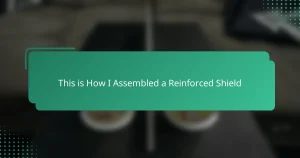Key takeaways
- Treat every prop weapon as if it were real, focusing on safety principles like keeping it pointed in a safe direction and clear communication.
- Regularly inspect props for any issues before use, and maintain a mental checklist to catch potential hazards early.
- Implement safety gear and storage solutions to prevent accidents and prolong the lifespan of props.
- Encourage open discussions about incidents on set to foster a culture of safety and continuous improvement among the team.
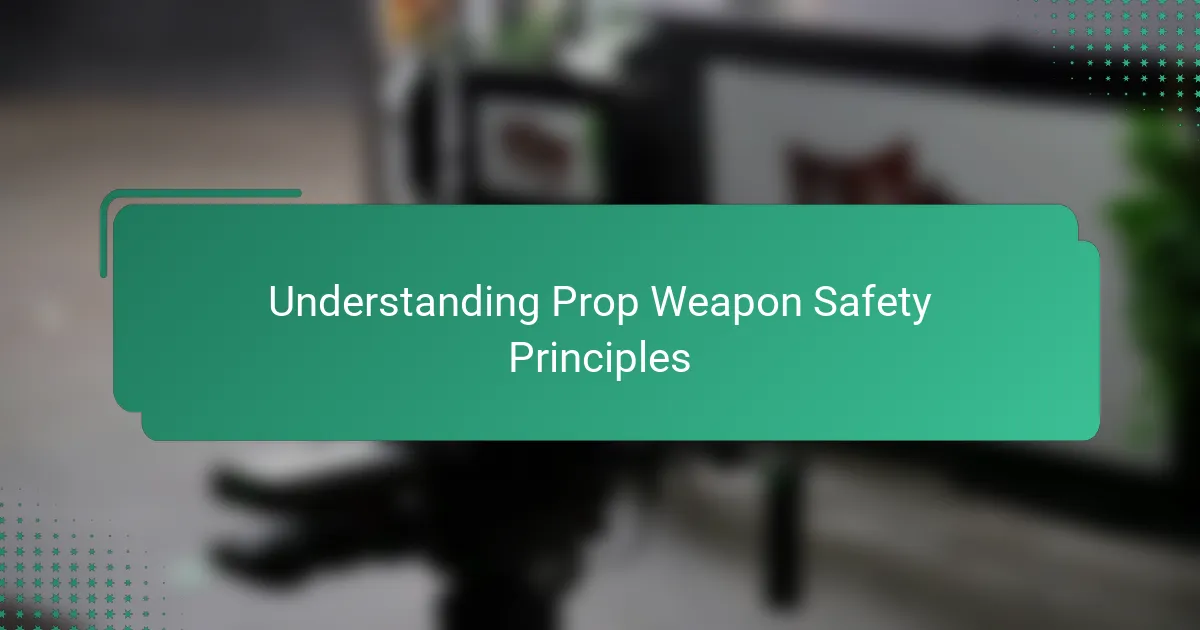
Understanding Prop Weapon Safety Principles
When I first handled a prop weapon on set, I quickly realized that understanding the fundamental safety principles wasn’t just a formality—it was a responsibility. Knowing the difference between a real firearm and a prop, and treating every weapon as if it were real, became my mental mantra. Have you ever caught yourself letting your guard down because something “looks safe”? That’s exactly where accidents can happen.
One principle that stuck with me is always keeping the weapon pointed in a safe direction, regardless of whether it’s loaded or not. It feels almost second nature now, but in those early days, I had to consciously remind myself every time. This discipline isn’t just about protecting others but also about cultivating a mindset that respects the potential danger, even in something designed to be purely theatrical.
Another lesson I learned is how vital clear communication is when handling prop weapons—every movement, every handoff should be announced and confirmed. I remember a moment when a simple verbal check prevented what could have been a serious mistake on set. It taught me that safety isn’t just about rules; it’s about trust and vigilance shared among everyone involved.
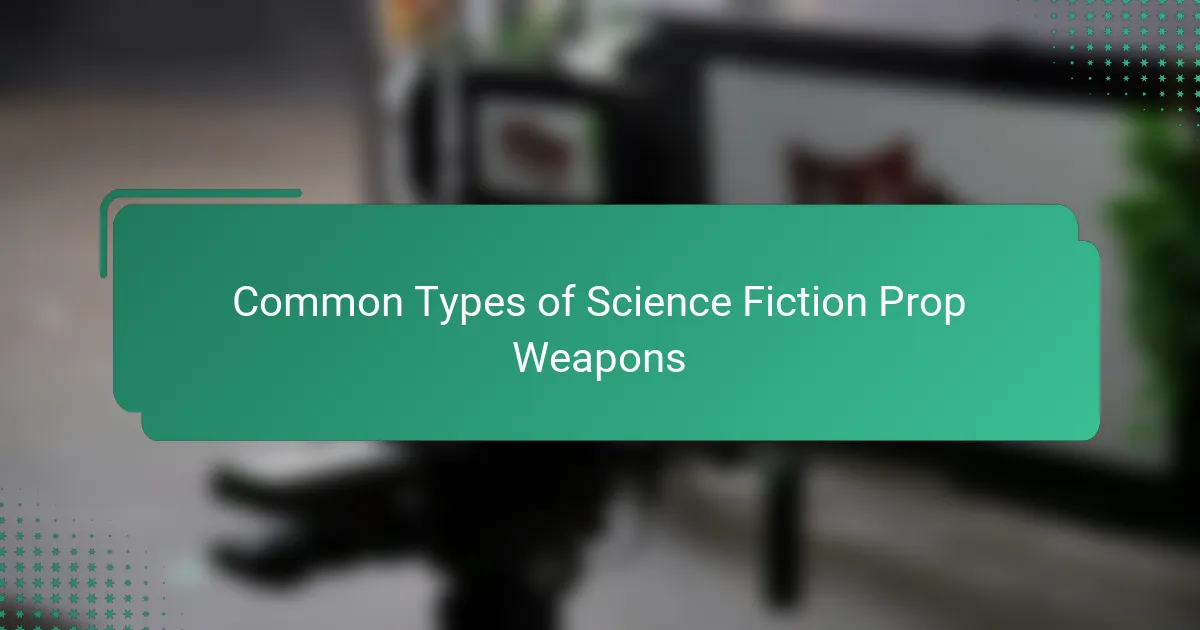
Common Types of Science Fiction Prop Weapons
Science fiction prop weapons come in all shapes and sizes, but the most common types I’ve encountered are laser guns, blasters, and futuristic rifles. Each has its unique look and feel, designed to capture the imagination while remaining safe to handle. Have you ever noticed how a sleek blaster can feel both imposing and delicate at the same time?
One thing that surprised me was how realistic some of these props can be, despite being entirely fake. For example, the weight and balance of a laser rifle often mimic real firearms to make actors’ movements believable. Handling these props made me appreciate the craftsmanship involved—and the extra caution needed to ensure safety when illusions feel so real.
Then there are melee weapons like energy swords or plasma knives, which add another layer of complexity. While they don’t fire projectiles, their sharp edges or glowing parts demand a different kind of respect. I remember feeling a mix of excitement and nervousness the first time I held an energy sword, knowing that although it couldn’t hurt me like a real blade, I still had to be mindful not to swing it wildly.
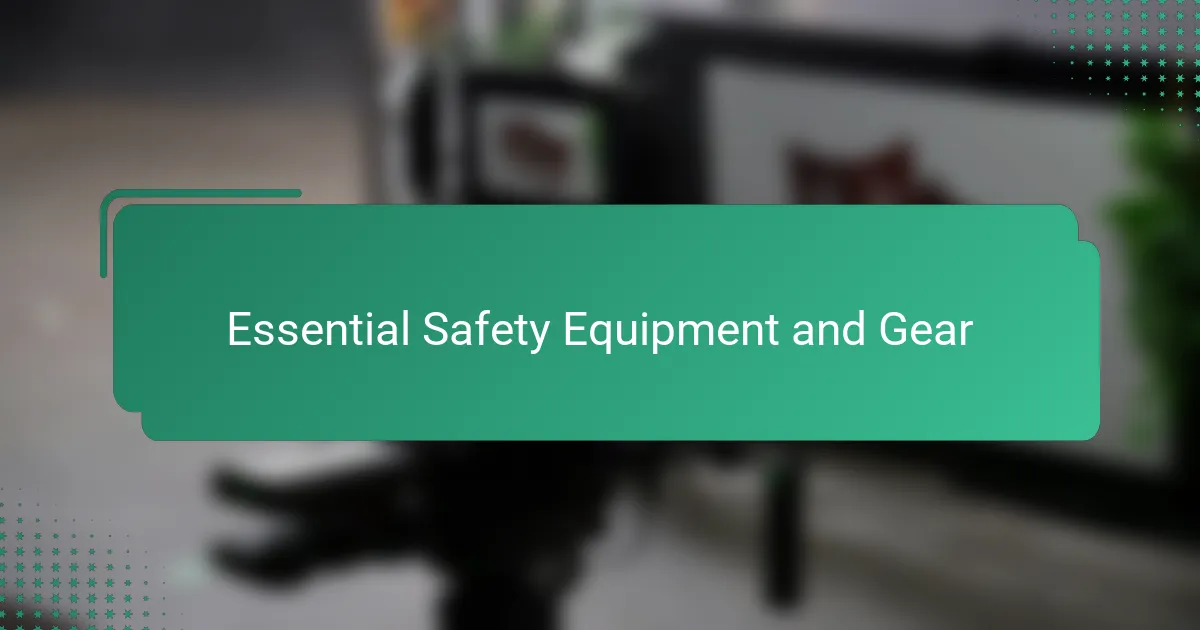
Essential Safety Equipment and Gear
Safety gear became my first line of defense whenever I handled prop weapons. I always made sure to wear protective eyewear—trust me, one unexpected ricochet from a falling piece is enough to make you thankful for that shield. Gloves also became non-negotiable, especially when dealing with props that had rough edges or hot components.
Have you ever noticed how a simple safety vest can change your mindset on set? Wearing one made me feel officially accountable, like I was part of a safety team rather than just an actor or technician. It helped keep my focus sharp, especially in chaotic environments where distractions are endless.
Beyond personal gear, I came to appreciate the role of properly maintained cases and secure holsters. These aren’t just storage—they’re vital tools that prevent accidental drops or unauthorized handling. I remember once catching a rolling prop pistol just in time because it was safely tethered, reinforcing how essential the right gear is to avoid mishaps.
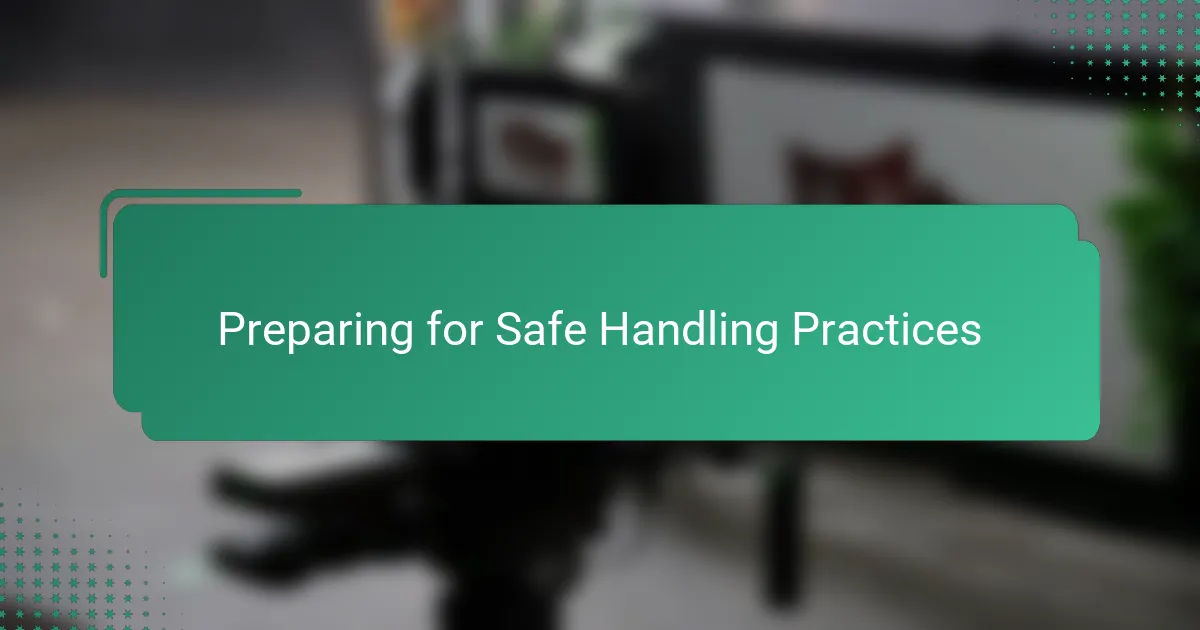
Preparing for Safe Handling Practices
Before even touching a prop weapon, I always take a moment to prepare mentally and physically. Have you ever paused to think about how your mindset affects your actions? For me, focusing on being calm and alert sets the foundation for safe handling—it’s like gearing up mentally before a performance.
I also make it a point to check the prop thoroughly before use. This means inspecting for any loose parts, ensuring triggers won’t catch unexpectedly, and verifying that all safety locks are engaged. One time, I caught a tiny crack on a prop blaster’s barrel that could have caused it to break mid-scene, and that small check saved everyone from potential hazard.
Lastly, organizing the workspace where the prop will be used feels crucial. Clearing unnecessary clutter and communicating with the team about movements helps me avoid awkward handoffs or accidental bumps. Do you know how much smoother everything runs when everyone shares one clear plan? From my experience, preparing like this eliminates many near-misses before they even happen.
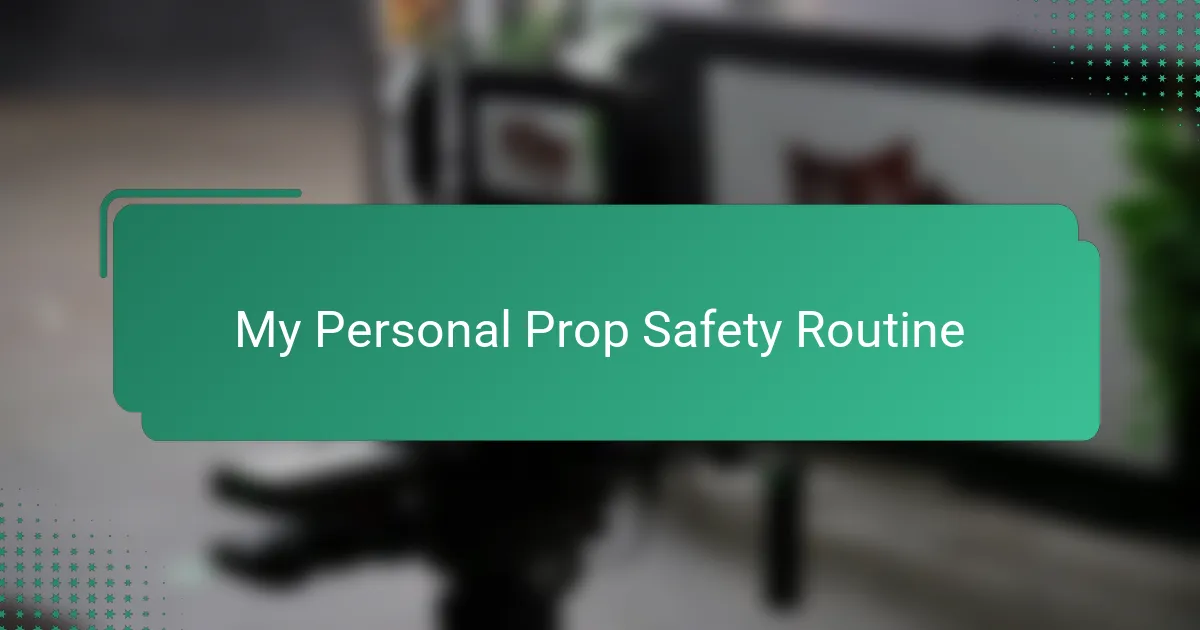
My Personal Prop Safety Routine
When I handle a prop weapon, my routine always starts with a deliberate pause—a moment to center myself and mentally commit to safety. It might sound simple, but this reset helps me treat the prop with the respect it deserves, no matter how familiar it feels. Have you ever noticed how quickly habits fade when adrenaline kicks in? That’s why I make sure to slow down first.
Next, I methodically go through my mental checklist: Is the prop unloaded? Are safety locks engaged? Is the barrel pointing somewhere harmless? Catching even the smallest detail can make all the difference. I remember once almost missing a tiny loose screw on a prop rifle, and realizing later that tiny things can cause big problems if overlooked.
Finally, communication is a non-negotiable part of my routine. Whether handing off a blaster or preparing for a scene, I always announce my actions clearly. It’s not just about avoiding accidents—it’s about building trust with everyone on set. Have you ever been in a situation where a simple “weapon coming your way” could’ve prevented a scare? I have, and since then, I never underestimate the power of a good heads-up.
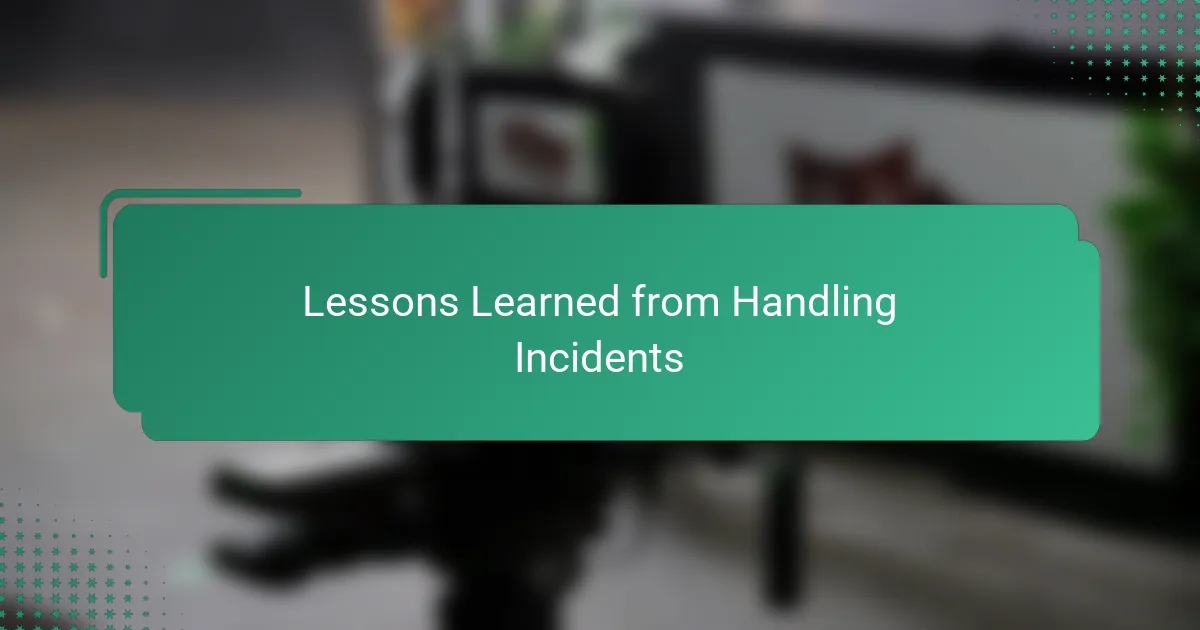
Lessons Learned from Handling Incidents
One lesson that really stuck with me after a handling incident was the importance of staying present. I remember a moment when my mind briefly wandered during a quick prop transfer, and that split second of distraction almost led to a fumble. Have you ever underestimated how small lapses can create big risks? It taught me that vigilance isn’t just for beginners—it’s something even experienced handlers must constantly practice.
Another insight came from an incident involving a prop blaster’s faulty trigger. When it caught unexpectedly, it reminded me that no matter how well you think you know your props, regular checks are vital. That moment was a wake-up call to never get complacent, because props can develop hidden issues that only careful inspection can catch.
Finally, I learned that open conversations about mistakes are essential for growth. After an accident on set, discussing what went wrong with the team helped me understand different perspectives and improved our collective approach. Have you noticed how honest feedback can transform fear into proactive safety? Opening up about incidents doesn’t just prevent repeats—it builds a culture where safety truly matters.
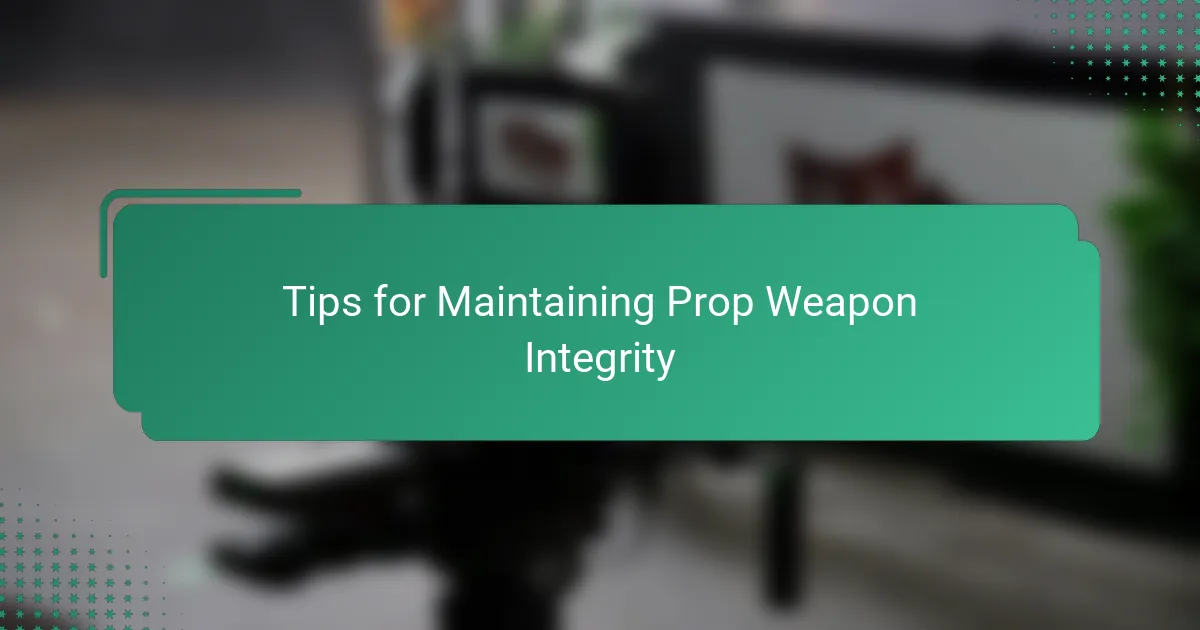
Tips for Maintaining Prop Weapon Integrity
Maintaining the integrity of prop weapons goes far beyond just treating them carefully—it means regular upkeep is non-negotiable. I’ve found that setting aside time after each use to clean and inspect the props prevents small issues like loose screws or worn hinges from turning into major problems on set. Have you ever experienced how a seemingly minor crack or jam can disrupt an entire scene? That’s why a hands-on check isn’t just precaution; it’s peace of mind.
Storage habits play a bigger role than I initially thought. When I started using padded cases and proper supports, I noticed fewer scratches and structural wear on my props. It’s easy to overlook how even a short drop or careless stacking can weaken synthetic materials or painted finishes, turning a cool sci-fi blaster into a fragile mess. From my experience, treating storage like part of the weapon’s lifecycle extends its usability remarkably.
I also learned to document every repair or modification, no matter how small. Keeping a simple log helped me track patterns, like which parts needed frequent tightening or replacement. This ongoing record became an invaluable tool in preventing surprises during shoots. Have you tried noting down these details before? I can’t recommend it enough—it turns maintenance from a chore into a strategic habit that saves time and stress.


